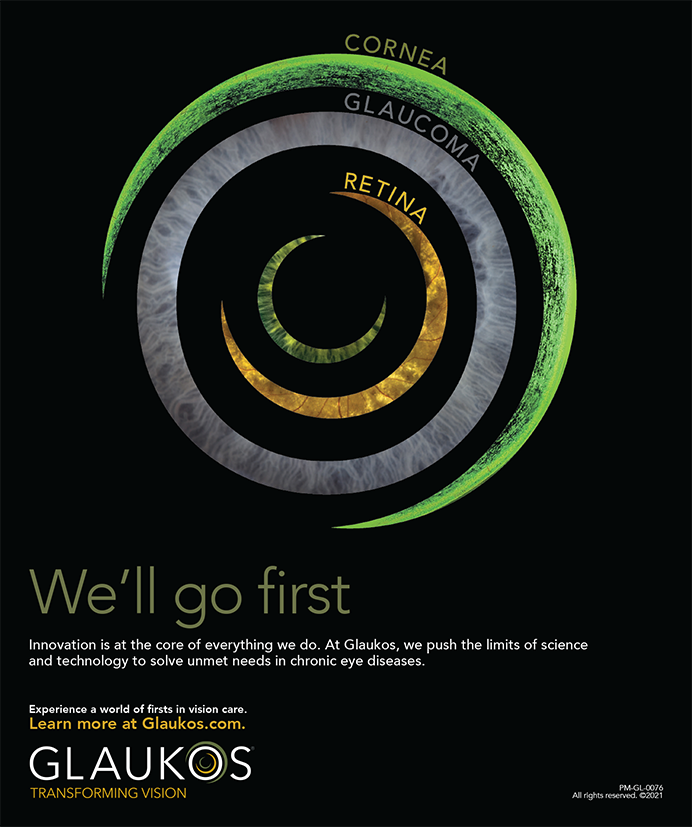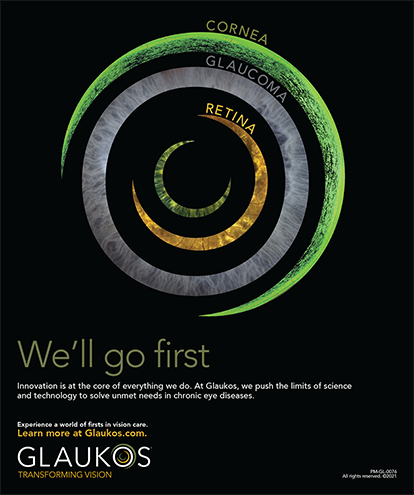If the quality of visual outcomes after cataract surgery were not affected by multiple variables, then the different approaches to the treatment of spherical aberration with the Sofport AO (LI61AO; Bausch & Lomb, Rochester, NY) and positively spherical or negatively aspheric IOLs might be of solely academic interest. Optical wavefronts do differ, however, and they are clinically important because they affect whether a patient will achieve better pseudophakic visual acuity from an aspheric rather than a conventional spherical IOL.
I use the Sofport AO lens because it "does no harm." Unlike a spherical IOL, the Sofport AO lens does not add positive spherical aberration to the optical system. Because the lens is spherically neutral and aberration free, it is immune to the deleterious effects on acuity that occur when an IOL with spherical aberration tilts or decenters in the capsular bag. The Sofport AO lens offers visual benefits to all of my cataract patients.
NEGATIVELY ASPHERIC IOLs
There is little doubt that a negatively aspheric IOL is capable of producing better vision than a conventional IOL, because the former is designed to neutralize the cornea's acuity-reducing, positive spherical aberration.1-3 The results of a recent laboratory study that used adaptive optics and a model of the visual system showed that visual acuity in monochromatic light would improve 10 to 38 if all ocular spherical aberrations were corrected.4
Laboratory testing has also indicated that the optical performance of a negatively aspheric IOL may be sensitive to errors in its positioning.5,6 If an IOL's optical center does not line up with the visual axis, the potential for a visual benefit decreases, particularly in mesopic conditions in eyes with large pupils.7
Negatively aspheric IOLs are calculated to balance out the average level of spherical aberration in the cornea.8,9 To prevent postoperative surprises in people whose eyes are not average, a surgeon using a negatively aspheric IOL would need to perform wavefront measurements on every cataract patient.
One study showed that a negatively aspheric IOL has to be within 0.10mm of perfect centration to reduce higher-order aberrations in 90 of patients with a 6.00-mm pupil. For the 50 mark, the IOL could decenter no more than 0.27mm for a 4.00-mm pupil, or 0.37mm for a 6.00-mm pupil.6
Perfect IOL centration on the visual axis is difficult to achieve and measure. Basic optical principles suggest that the decentration or tilt of a negatively aspheric IOL could significantly reduce the optical transfer function compared to equally decentered standard lens implants, particularly at higher spatial frequencies.10-14 This reduction is in part because of induced second- and third-order aberrations such as astigmatism and coma.6 Lining up an IOL with the center of a pupil, however, does ensure the lens' centration on the visual axis for two reasons. First, the location of the pupillary center varies with dilation5; the center shifts an average of 0.19mm but up to 0.70mm. Second, the average offset between the visual axis and the pupil's center has measured 0.37 ±0.24mm.15 An IOL that appears perfectly centered at the slit lamp may actually be off axis by as much as 0.5mm.
Patients who previously underwent LASIK or PRK are especially at risk for problems with a negatively aspheric IOL.16-18 It can be difficult for ophthalmologists to determine the optical center of these patients' corneas and to match it with the IOL. Also, refractive surgery can leave corneas with positive or negative spherical aberration, In the latter case, adding a negatively aspheric lens could further compromise both the patient's UCVA and BCVA.
SPHERICALLY NEUTRAL IOLs
The Sofport AO lens features prolate anterior and posterior surfaces, and it has a uniform thickness and refractive power from the lens' center to its edge. This configuration accounts for the IOL's lack of spherical aberration. It also keeps the lens' refractive power and the patient's visual acuity stable as the pupil's size or the lens' location varies.
Bench testing and computer modeling indicate that, even when misaligned as much as 1mm, the Sofport AO lens will perform better optically than a well-centered standard IOL.5 Consequently, there are no contraindications (eg, weak zonules) for the Sofport AO lens.
Using a spherically neutral IOL may avoid some of the potential drawbacks of a negative aspheric or a positive spherical IOL. Eliminating all of an eye's positive aberration may reduce some patients' visual acuity, because small amounts of spherical aberration improve the depth of field and balance out the degradation of the retinal image from other types of higher-order aberrations.19
SOFPORT AO VERSUS NEGATIVELY ASPHERIC IOL
An ongoing clinical study has found that patients with negatively aspheric lenses have experienced a clinically significant loss of depth of field, whereas those with Sofport AO implants have not.20 The study, which compares the Sofport AO lens to a negatively aspheric IOL, has shown few clinically significant differences in both lenses' performance in vivo.20 The study includes 237 eyes of 237 patients, 174 of whom have been followed for at least 6 months. After phacoemulsification, each patient received a Sofport AO lens or one of two control IOLs, one of them negatively prolate and the other conventionally spherical.
At 6 months postoperatively, there were small, statistically significant differences in spherical aberration between the Sofport AO lens and the other two lenses. Sofport AO eyes had less spherical aberration than eyes with the standard IOL but slightly more than eyes with the negatively prolate lens (Figure 1). There was no meaningful difference between the Sofport AO and negatively prolate IOLs when it came to visual acuity, however.
In addition, the researchers found no statistically significant differences in logMAR UCVA between the lens groups. The negatively prolate IOL, however, did provide better low-contrast BCVA than the Sofport AO lens under mesopic conditions (at 1.5 cycles per degree only), both with and without glare. The differences in BCVA differences were too small to be clinically meaningful (Figure 2).
Depth of field was reduced clinically and statistically significantly in eyes implanted with the negatively aspheric IOL (Figure 3). The investigators should monitor these results closely as the study progresses, because losing depth of field could endanger patients, particularly elderly individuals prone to falls.
IN SUMMARY
The Sofport AO lens' design is an alternative for minimizing spherical aberration in pseudophakia. This IOL is a "do no harm" lens, as it will not alter the spherical aberration of the eye if any tilt or decentration occurs. The IOL offers optimal optics for the maximum number of people without risking postoperative surprises and unhappy patients.
Rosa Braga-Mele, MEd, MD, is Associate Professor at the University of Toronto and Director of Cataract Unit at Mt. Sinai Hospital in Toronto. She is a consultant to Bausch & Lomb, Advanced Medical Optics, Inc., and Alcon Laboratories, Inc., but acknowledged no financial interest in the products mentioned herein. Dr. Braga-Mele may be reached at (416) 462-0393; rbragamele@rogers.com
.

